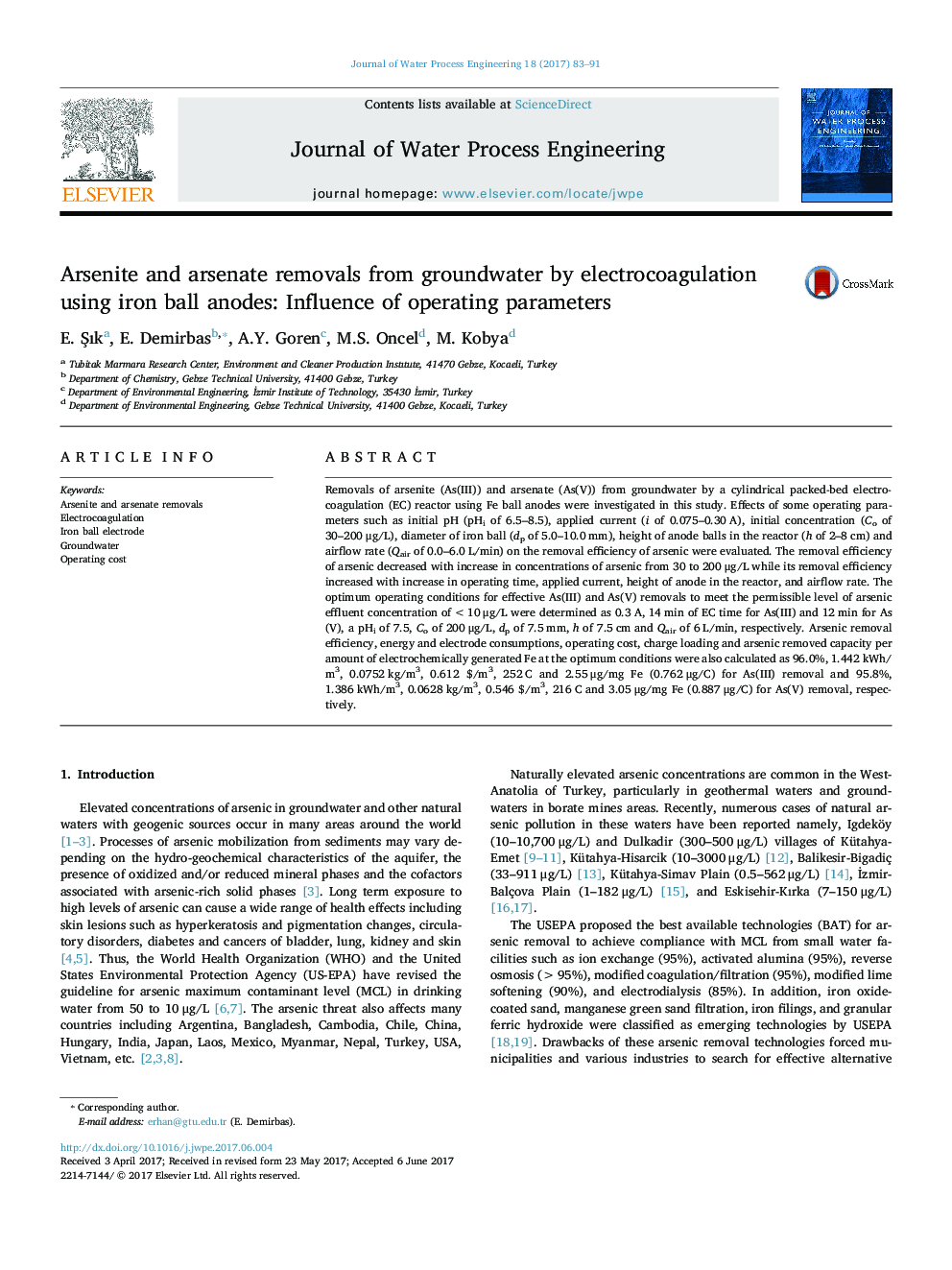| Article ID | Journal | Published Year | Pages | File Type |
|---|---|---|---|---|
| 4910032 | Journal of Water Process Engineering | 2017 | 9 Pages |
Abstract
Removals of arsenite (As(III)) and arsenate (As(V)) from groundwater by a cylindrical packed-bed electrocoagulation (EC) reactor using Fe ball anodes were investigated in this study. Effects of some operating parameters such as initial pH (pHi of 6.5-8.5), applied current (i of 0.075-0.30 A), initial concentration (Co of 30-200 μg/L), diameter of iron ball (dp of 5.0-10.0 mm), height of anode balls in the reactor (h of 2-8 cm) and airflow rate (Qair of 0.0-6.0 L/min) on the removal efficiency of arsenic were evaluated. The removal efficiency of arsenic decreased with increase in concentrations of arsenic from 30 to 200 μg/L while its removal efficiency increased with increase in operating time, applied current, height of anode in the reactor, and airflow rate. The optimum operating conditions for effective As(III) and As(V) removals to meet the permissible level of arsenic effluent concentration of <10 μg/L were determined as 0.3 A, 14 min of EC time for As(III) and 12 min for As(V), a pHi of 7.5, Co of 200 μg/L, dp of 7.5 mm, h of 7.5 cm and Qair of 6 L/min, respectively. Arsenic removal efficiency, energy and electrode consumptions, operating cost, charge loading and arsenic removed capacity per amount of electrochemically generated Fe at the optimum conditions were also calculated as 96.0%, 1.442 kWh/m3, 0.0752 kg/m3, 0.612 $/m3, 252 C and 2.55 μg/mg Fe (0.762 μg/C) for As(III) removal and 95.8%, 1.386 kWh/m3, 0.0628 kg/m3, 0.546 $/m3, 216 C and 3.05 μg/mg Fe (0.887 μg/C) for As(V) removal, respectively.
Related Topics
Physical Sciences and Engineering
Chemical Engineering
Chemical Engineering (General)
Authors
E. Åık, E. Demirbas, A.Y. Goren, M.S. Oncel, M. Kobya,
